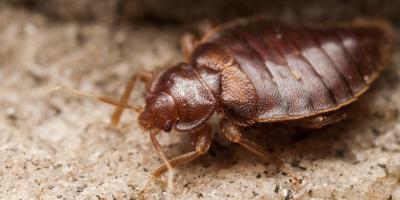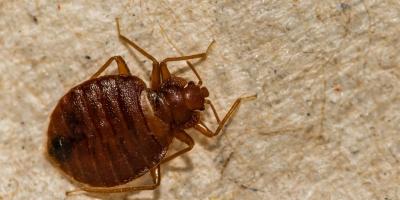Used Furniture: Getting More than You Bargained For

Who doesn’t love a good deal, especially on traditionally big-ticket items like furniture? Unfortunately, with the popularity of vintage furniture and consignment store finds on the rise, shoppers might bring home unwanted surprises with their purchases. These used treasures are not just targets for bargain hunters, but also pests like bed bugs and spiders.
Before you brave the thrift shop near you, brush up on some helpful tips regarding how to inspect furniture for more than the comfort factor or complementary pattern.
Buyer Beware!
Used furniture can be a fun way to update your home and save a few bucks in the process, but nothing takes the shine off the perfect thrift store find like discovering unwanted pests after bringing it home. The types of pests most likely to potentially hitch a ride on your purchase include spiders and bed bugs.
Between the two, even the most arachnophobic among us would admit that bed bugs are far worse when it comes to getting rid of them once and for all. Upholstered furniture presents a particular challenge as the fabric provides the perfect place for bedbugs to hide, hunkering down until they can make themselves at home in your other belongings.
Although far from foolproof, there are a few bed bug avoidance tips you can keep in mind ahead of your next shopping adventure:
A Three-Step Approach to Inspecting Used Furniture
Before you even consider approaching a consignment, thrift store, or yard sale; you’ll want to pack some furniture inspecting necessities. These include:
- Bedsheet (white)
- Flashlight
- Latex gloves (white)
- Magnifying glass
Once armed with these essentials, follow these three easy steps to ensure that you’re making a safe purchase.
Step One
Once you’ve found the furniture you’re looking for, set it on top of the sheet and look carefully for bed bugs that might land on the sheet after the piece has been moved.
Step Two
Next, with the help of a credit card, comb the surface of the furniture, focusing on potential hiding places, like the creases between cushions, for example. For wooden or otherwise non-upholstered furniture, inspect grooves or cracks for bedbugs. Basically, you want to disturb any narrow or tight spaces because those are ideal places for bedbugs to hide. Use your flashlight to make the job easier.
Step Three
Throughout the process, take a careful look at the sheet and your gloves. Remember, you might not see a bedbug, but you could see signs of one in stains left by fecal matter. This is where your magnifying glass will come in handy.
Throughout your careful inspection, be sure to touch the furniture only with your gloved hands. Avoid sitting, leaning, or otherwise pressing up against it until you have confirmation that the piece is, indeed, free of bed bugs.
This is also true of any personal belongings you’ve brought with you. Do not, for example, rest your bag, purse or jacket on the furniture to avoid potential bed bugs hitching a ride home with you.
No matter how perfect that piece of furniture, it stays where it lays if you see so much as a single sign of a bed bug. Dealing with a bed bug infestation in your home just isn’t worth it.
In the Event of a “Gift” with Purchase
Let’s say you checked and the furniture seemed bed bug-free, until you got it home. Or, maybe you were gifted a couch from a friend or relative who decided to downsize. Whatever the scenario, if you do spot bed bugs on a recent purchase, don’t panic.
But, remember --
Bed bugs are invasive and require the help of your pest management professional in order to rid your residence of bed bugs quickly and effectively. At the first sign of bed bugs, contact our team, nationally recognized and awarded for our bed bug control strategies.



